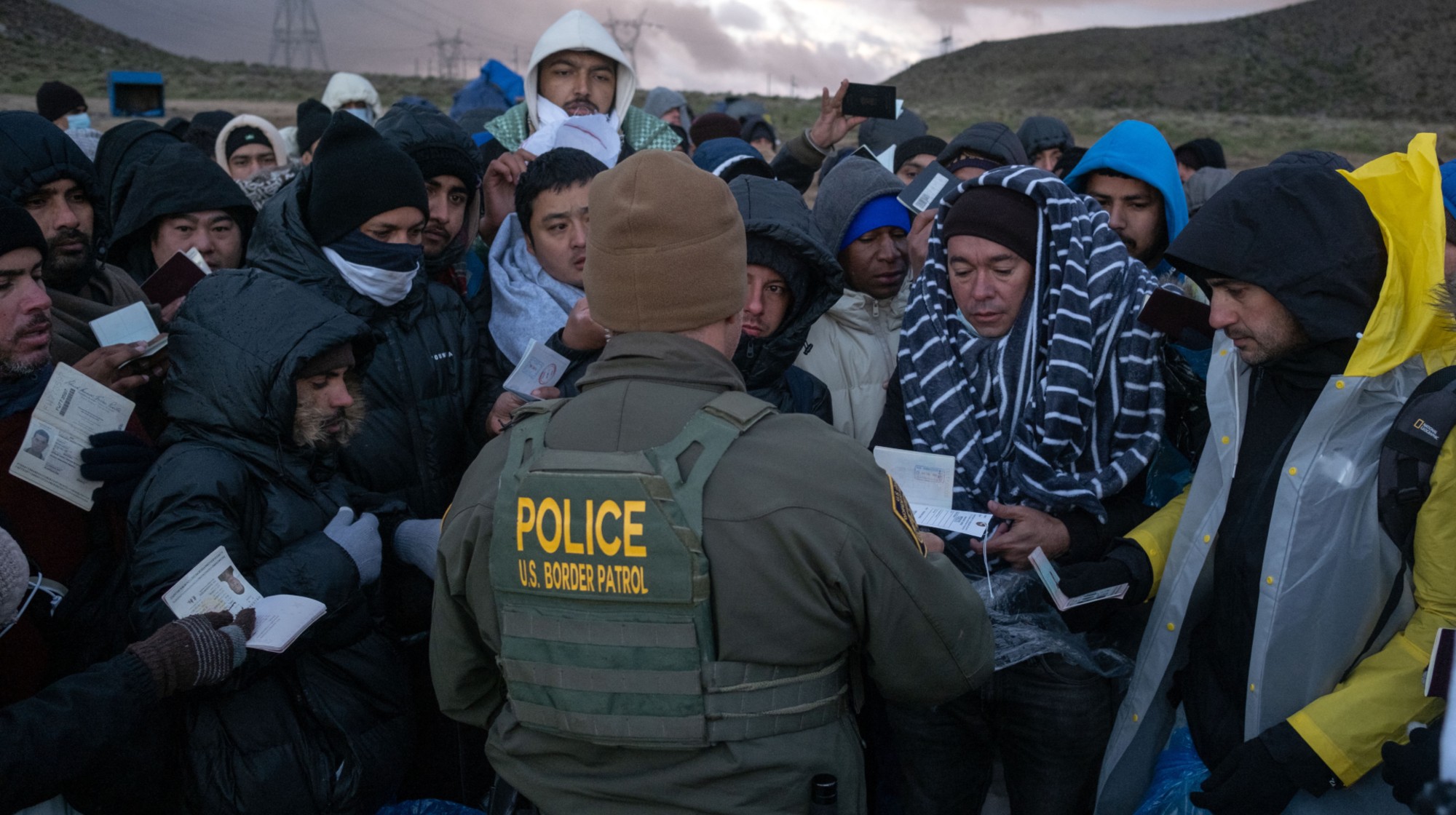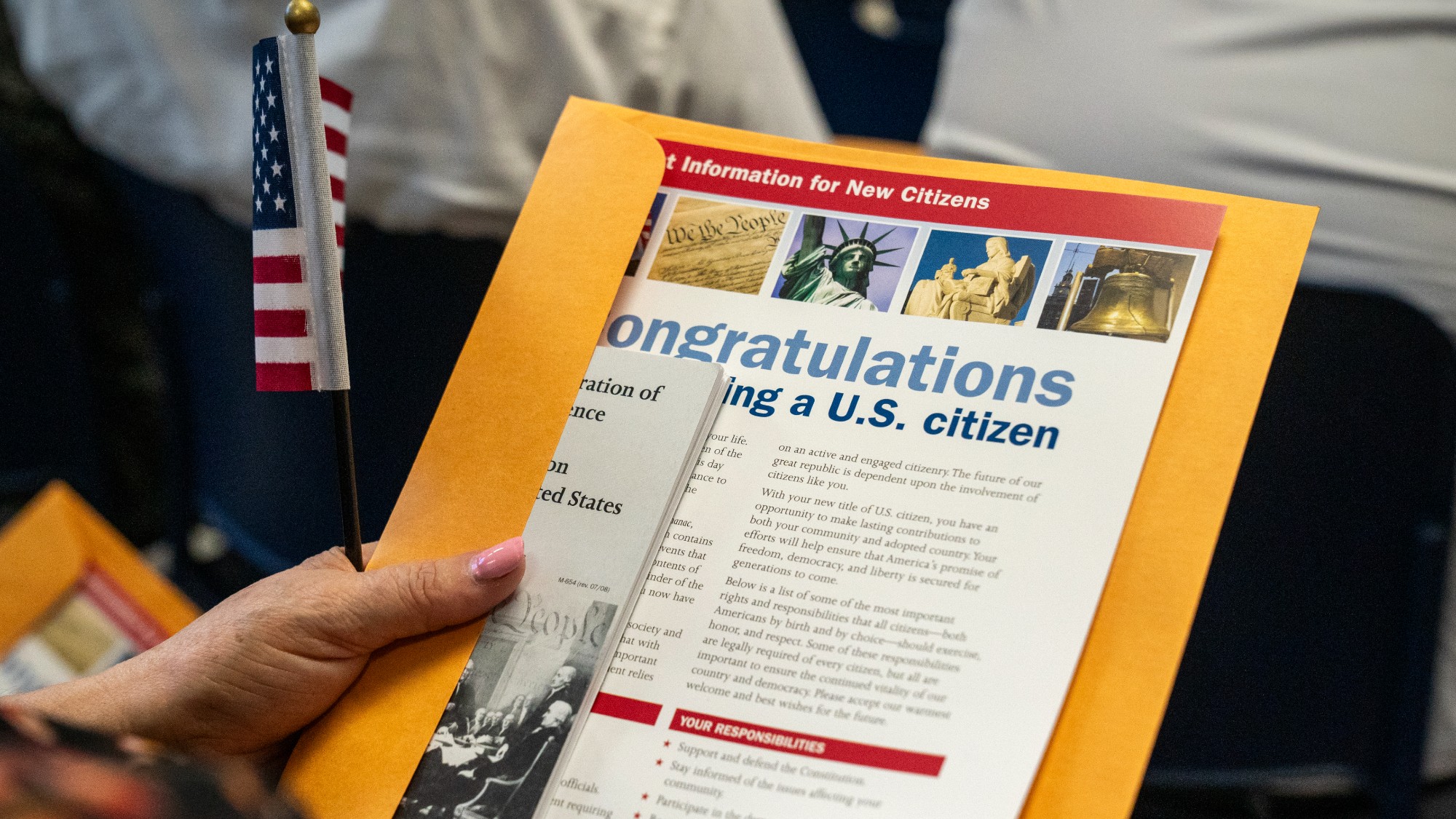Why the end of Title 42 could mean immigration 'chaos'
A pandemic rule that turned away two million migrants is about to be lifted


A surge of migrants is coming. Title 42, a pandemic-era policy that restricted the flow of migrants across America's Southern border, is scheduled to be lifted on May 11, the same day COVID-19's designation as a public health emergency comes to an end. As a result, Southern states are bracing for an influx of arrivals at an already-overwhelmed border. Republican governors like Texas' Greg Abbott have likened the end of Title 42 to "a catastrophic disaster," but the Biden administration has continually assured that it is ready for the wave of migrants.
What is Title 42?
It's a law aimed at stopping the spread of communicable diseases, the Texas Tribune explains. The rule gives the director of the CDC authority to limit immigration in order to curb the spread of infection from other countries, "for as long as health officials determine the action is necessary." The Trump administration invoked the law in March 2020, closing the borders to both Mexico and Canada. That's had a massive effect on migration: Since Title 42 went into effect, "immigration officials have used the health order more than 2.4 million times to expel migrants." That included many migrants who under normal circumstances would have had the right to apply for asylum in the United States.
So Title 42 is not an immigration policy?
No. It's a health policy — but one that's been treated as a de facto immigration tool. As Ellen Ioanes notes at Vox, "Republican-led states have been trying to keep it in place due to its effectiveness in curbing immigration, particularly at the Southern border." Indeed, the Texas Tribune notes that Stephen Miller, the Trump administration's immigration hawk, pushed to use the health law to limit immigration back in 2018 — more than a year before the pandemic emerged.
The Week
Escape your echo chamber. Get the facts behind the news, plus analysis from multiple perspectives.

Sign up for The Week's Free Newsletters
From our morning news briefing to a weekly Good News Newsletter, get the best of The Week delivered directly to your inbox.
From our morning news briefing to a weekly Good News Newsletter, get the best of The Week delivered directly to your inbox.
Why is Title 42 ending?
The Biden administration tried to end the policy for most of 2022. As CNN notes, the White House announced in April of that year that it was lifting Title 42 because "current public health conditions and an increased availability of tools to fight COVID-19" make it no longer necessary. That decision was soon tied up in lawsuits, particularly from Republican states trying to keep Title 42 in place. The White House drew criticism for actually expanding Title 42 policies at the beginning of 2023 in an effort to stem the flow of migrants at the border.
Are officials at the border ready for more migrants?
The White House says they are. Secretary of Homeland Security Alejandro Mayorkas told NBC News the Biden administration is chiseling out national immigration laws to target smugglers, and that "the rule that we are finalizing and will implement by May 11 cuts those smugglers out." Mayorkas added that despite the buildup of migrants, "the border is not open, it has not been open and it will not be open subsequent to May 11."
More than 150,000 people are waiting to move into the U.S. once Title 42 expires, sources tell CNN. To preempt these crossings, the administration is sending at least 1,500 active-duty troops to support border agents, CNN reports, and they are likely to remain there for at least 90 days. Some states are also taking their own steps: Abbott announced that Texas is deploying a "tactical border force" to identify high-immigration areas.
What have Republicans done?
They're vocally opposed to lifting the policy, and have tried to pass legislation that would keep it on the books. "Whether it's COVID or some other issue, when you have people coming across the globe without knowing at all what their health status is, that almost by definition is a public health risk," Abbott told ABC News. "There's every reason to keep that in place." As Title 42 ends, House Republicans are slated to vote on a bill that would expand border protections, Axios reports, by "[codifying] some of former President Trump's strictest border actions" and also restart the building of Trump's border wall. However, the White House has pushed back against this action, and Biden has pledged to veto any GOP-led immigration bill that reaches his desk. Given that the Democrats control the Senate, this type of bill is unlikely to make it out of Congress anyway.
A free daily email with the biggest news stories of the day – and the best features from TheWeek.com
What happens next?
While the White House works to deter illegal crossings with new policies, "it has done little to address the immediate issue of managing the expected high volume of people," The New York Times reports. As a result of Title 42's end, "border officials will be forced to release migrants to border communities more often, increasing the burden on local officials and shelter operators," the Times adds.
The White House has taken a number of steps to halt illegal migration, such as "a restriction on asylum, with expanded opportunities for migrants to enter the U.S. legally," CBS News reports. However, these new policies will probably "face immediate legal challenges from immigration advocates," The Wall Street Journal reports, and even if they survive those challenges, it's not clear whether the new strategies will "redirect" the expected influx of migrants. Immigration, always a tough challenge for American officials, may be about to get even more challenging.
May 10, 2023: This article has been updated to reflect the end of Title 42.
Joel Mathis is a writer with 30 years of newspaper and online journalism experience. His work also regularly appears in National Geographic and The Kansas City Star. His awards include best online commentary at the Online News Association and (twice) at the City and Regional Magazine Association.
-
 Metaverse: Zuckerberg quits his virtual obsession
Metaverse: Zuckerberg quits his virtual obsessionFeature The tech mogul’s vision for virtual worlds inhabited by millions of users was clearly a flop
-
 Frank Gehry: the architect who made buildings flow like water
Frank Gehry: the architect who made buildings flow like waterFeature The revered building master died at the age of 96
-
 Is MAGA melting down?
Is MAGA melting down?Today's Big Question Candace Owens, Tucker Carlson, Laura Loomer and more are feuding
-
 Homeland Security Secretary Kristi Noem might not be long for Trumpland
Homeland Security Secretary Kristi Noem might not be long for TrumplandIN THE SPOTLIGHT She has been one of the most visible and vocal architects of Trump’s anti-immigration efforts, even as her own star risks fading
-
 Abrego García freed from jail on judge’s order
Abrego García freed from jail on judge’s orderSpeed Read The wrongfully deported man has been released from an ICE detention center
-
 $1M ‘Trump Gold Card’ goes live amid travel rule furor
$1M ‘Trump Gold Card’ goes live amid travel rule furorSpeed Read The new gold card visa offers an expedited path to citizenship in exchange for $1 million
-
 ECHR: is Europe about to break with convention?
ECHR: is Europe about to break with convention?Today's Big Question European leaders to look at updating the 75-year-old treaty to help tackle the continent’s migrant wave
-
 The Trump administration says it deports dangerous criminals. ICE data tells a different story.
The Trump administration says it deports dangerous criminals. ICE data tells a different story.IN THE SPOTLIGHT Arrest data points to an inconvenient truth for the White House’s ongoing deportation agenda
-
 Trump tightens restrictions for work visas
Trump tightens restrictions for work visasSpeed Read The length of work permits for asylum seekers and refugees has been shortened from five years to 18 months
-
 Why do Republicans fear immigration raids in North Carolina?
Why do Republicans fear immigration raids in North Carolina?Today’s Big Question Trump’s aggressive enforcement sparks backlash worries
-
 Memo signals Trump review of 233k refugees
Memo signals Trump review of 233k refugeesSpeed Read The memo also ordered all green card applications for the refugees to be halted
